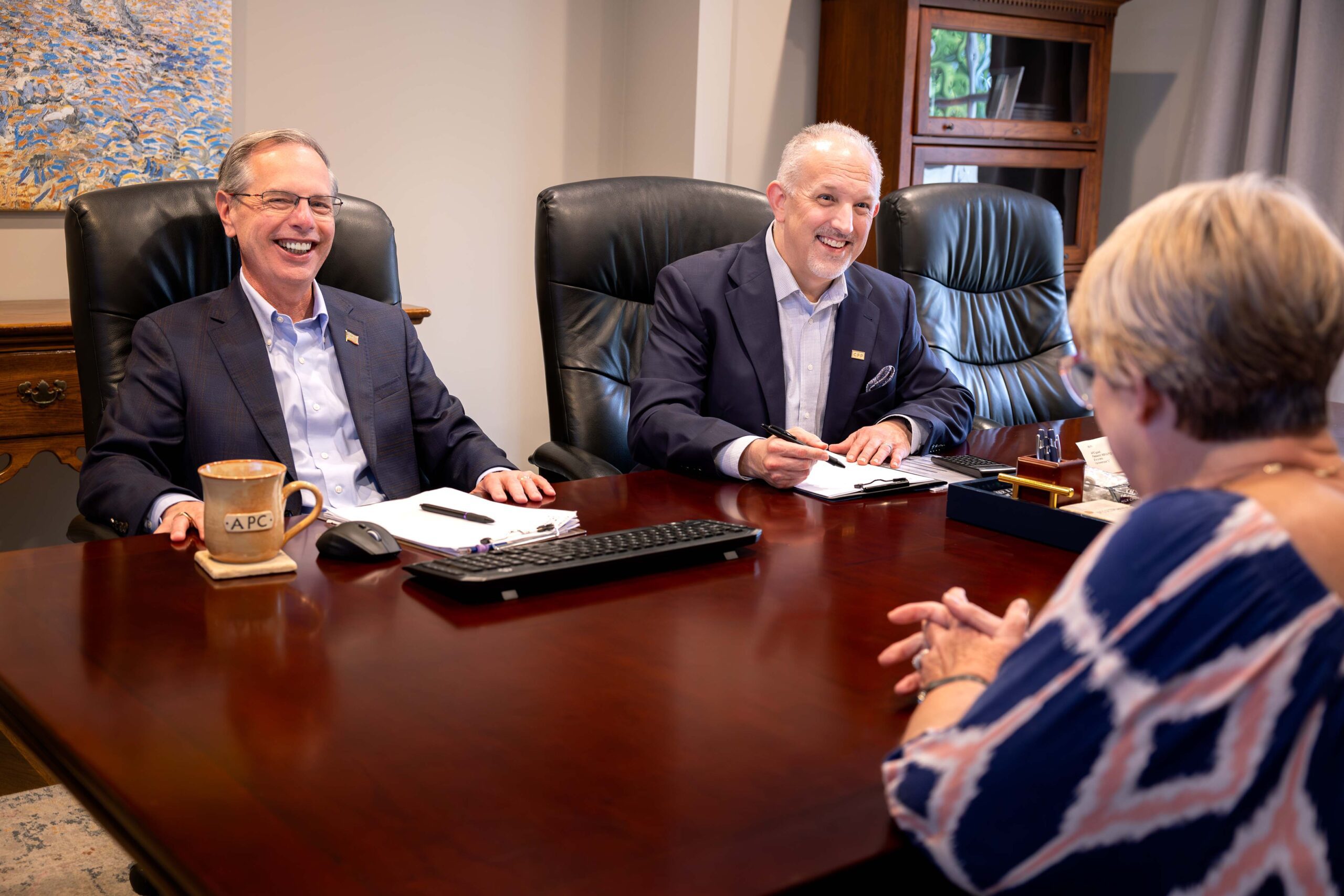
Approaching Retirement with Confidence
Many of our clients come to APC when “retirement” has suddenly moved “someday” to almost now!
For some, they have a specific date or age in mind. For others, it’s a new or pending event such as the sale of a business or a change in life circumstances. And some just want to know, “Can I do it? And how soon?”
In other words, they want to know, “Am I ready?”
While it’s never too soon to plan for the future, many find that the ages of 55 to mid-60s prompt a lot of new questions.
If that’s you, you may be wondering…
- Have I saved enough? Do I need to be saving more?
- Am I saving in the right places? Is my 401(k) enough?
- When should I file for Social Security to make sure I’m getting the best deal?
- I don’t know what it’s like to live without a paycheck. How much can I safely spend once I retire?
- What should I be doing now that I haven’t thought about?
Retire With Peace of Mind
At APC, we’ve been answering questions just like these for clients just like you for over 50 years.
We’ll help take inventory of where you are, where you want to go, and what you need to do to get there.
Case Study: Meet the Wilsons

For Bill and Mary Wilson, the house is quieter these days. Their three children are grown, college graduates, and off on their own. At 60 and 61, the Wilsons are officially empty nesters—but new questions are replacing the old routines.
Bill, a physician, always imagined working into his late 60s. But after a long day at the clinic, he sometimes wonders: “Could I retire earlier?” Mary, a long-time nonprofit volunteer, is excited about what comes next, especially with their first grandchild on the way.
The APC Way: Preparing for Landing
Aligning Retirement Timing with Life’s Realities
We like to say that retirement is like landing an airplane. Before touchdown, a pilot checks weather, fuel, and runway conditions—so the descent is smooth and safe.
We helped the Wilsons run through their own retirement “landing checklist,” looking at assets, liabilities, lifestyle goals, and long-term family needs. Our planning tools modeled various retirement timelines so Bill could evaluate what earlier retirement might look like, while maintaining flexibility and peace of mind.
Solving for Healthcare and Longevity
Mary had a practical concern: What would they do about healthcare coverage before age 65? Bill has high blood pressure, and Mary is a breast cancer survivor. They also help care for Mary’s 87-year-old mother, so long-term health needs are top of mind.
We collaborated with an independent consultant to explore health insurance options and worked closely with their CPA and estate attorney to align tax and legacy planning—all as part of a comprehensive, real-life plan.
Spending Smarter, Saving More
The Wilsons were accustomed to a lifestyle where cash flow wasn’t an issue. But retirement required a closer look at both current and future spending.
We helped them establish a retirement income target and tested “what if” scenarios—covering Social Security claiming strategies, tax impacts, and whether paying off their mortgage made sense. With this clarity, Bill increased his retirement savings and felt more prepared for a smooth transition.
Bringing Order to Their Investments
Although the Wilsons had done well saving and investing, their assets were scattered across accounts and advisors. Bill tended to be more risk-tolerant, while Mary was more conservative, especially after recent market swings.
We brought their portfolio under one coordinated strategy—realigning their investments to better reflect their risk tolerance and time horizon. We gradually shifted assets into conservative “income buckets” and now proactively manage their allocation, investment quality, and tax efficiency.
Retiring To Something
With more freedom ahead, Mary is eager to embrace grandparenthood. Bill dreams of traveling—and continuing his tradition of medical mission trips to South America.
We guided them through exercises that helped clarify what their retirement would be about: volunteering, fitness, part-time work, family time, and meaningful travel. It’s not just about what you’re retiring from, but what you’re retiring to.